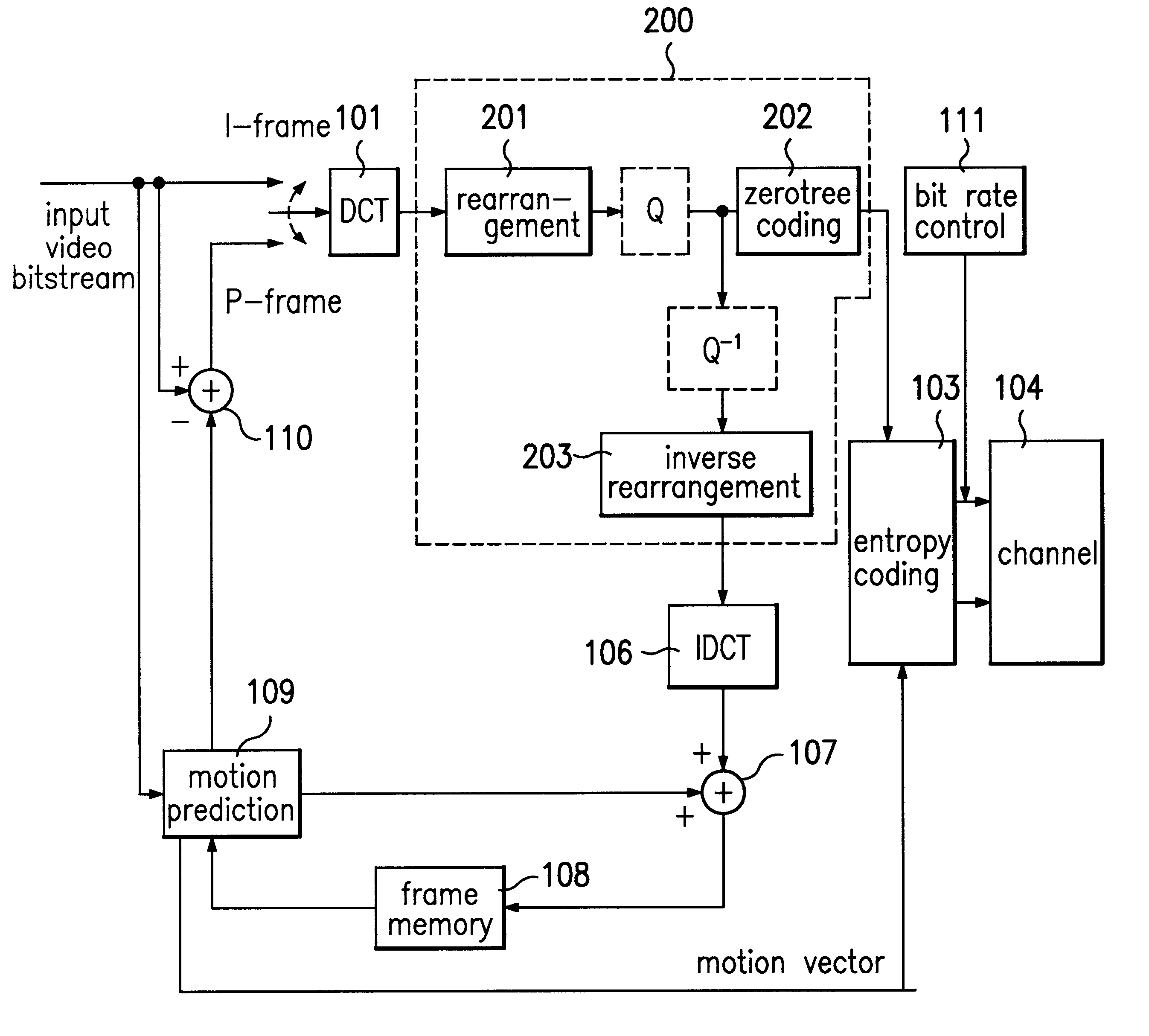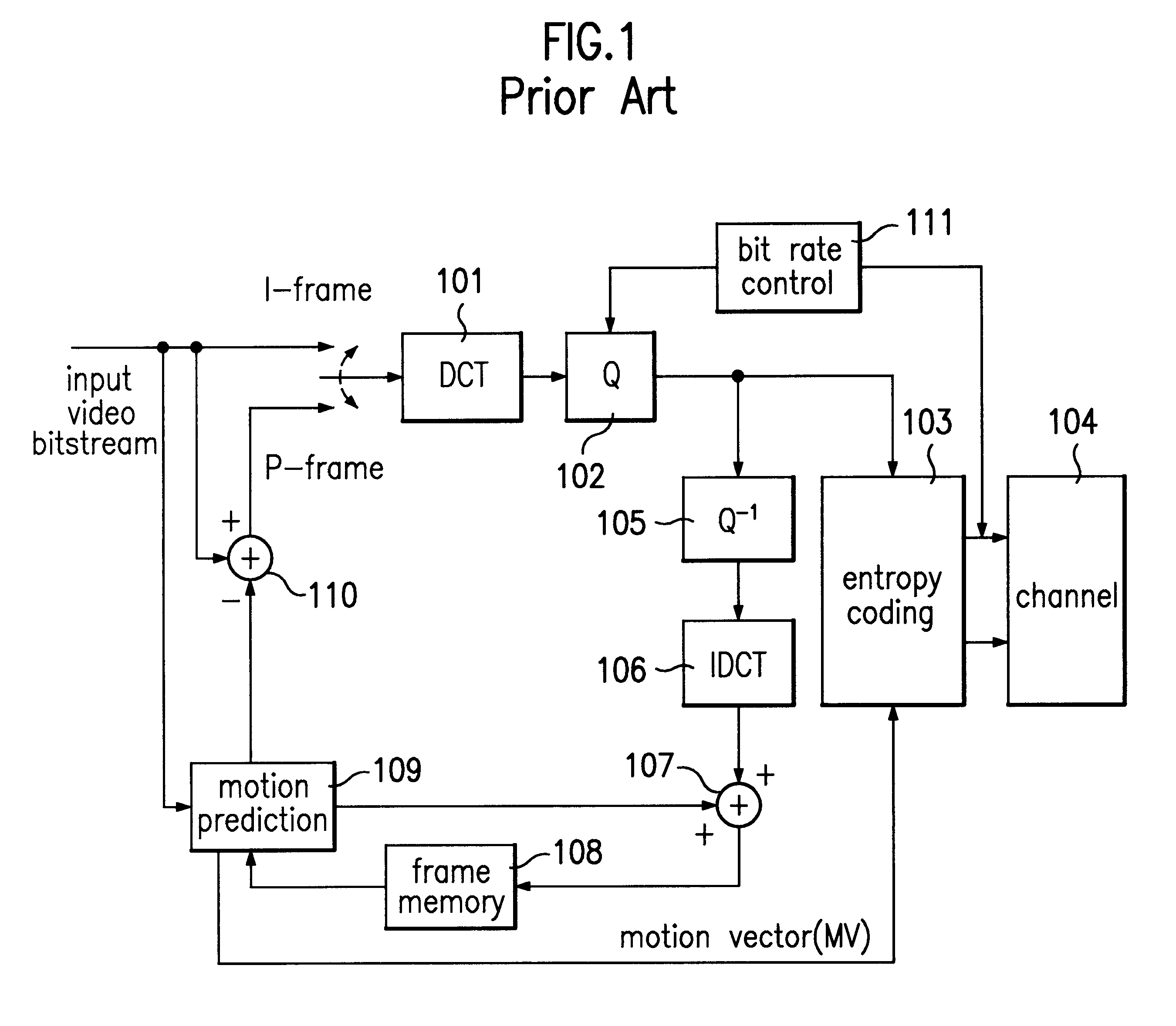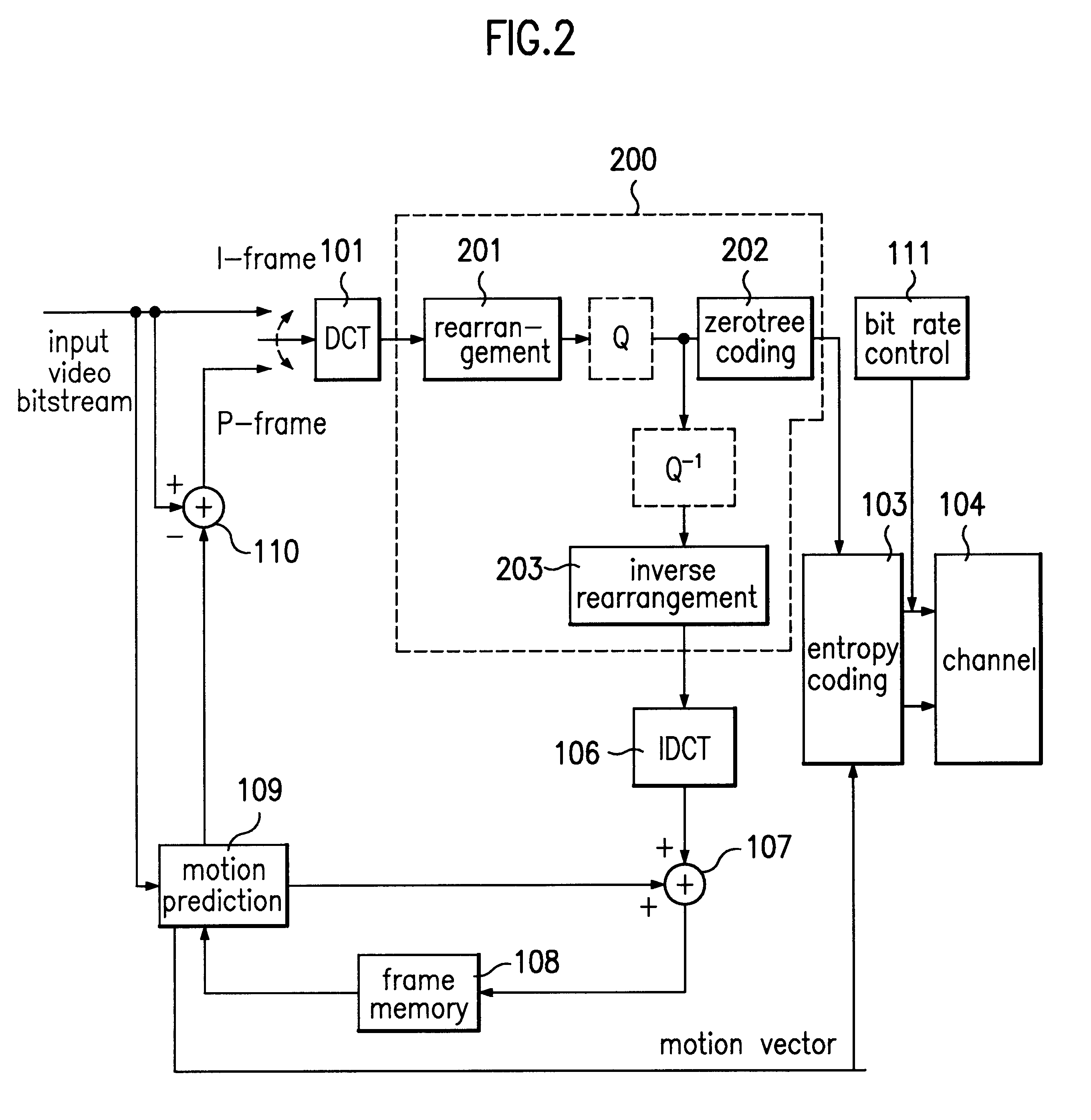Video coding and decoding method and its apparatus
a video signal and video coding technology, applied in the field of video signal coding and decoding, can solve the problems of deteriorating the overall efficiency of the run-length coding method using the existing zigzag scanning, the b frame itself is not usable for prediction of other frames, and the energy compression efficiency of the dfd image is reduced
- Summary
- Abstract
- Description
- Claims
- Application Information
AI Technical Summary
Benefits of technology
Problems solved by technology
Method used
Image
Examples
Embodiment Construction
Reference will now be made in detail to the preferred embodiment according to the present invention, examples of which are illustrated in the accompanying drawings. Generally, zerotree structures such as EZW and SPIHT commonly use the properties of a Decaying Spectrum corresponding to the inter-band spatial frequency characteristic in the wavelet transformation. Although there are some differences, the wavelets have common properties with the DCT. Thus, the DCT may be used in the embedded zerotree coding by appropriately rearranging the DCT coefficients.
The present invention enhances the efficiency of zerotree coding by rearranging the DCT coefficients in a 2-level zerotree structure using a wavelet decomposition or transformation by which 8.times.8 DCTs have 64 uniform frequency subbands. The result is a 2-level mapping method for DCT coefficients with an efficient zerotree structure and better image quality than the I frame coding method of H.263, the low transfer bit rate video c...
PUM
 Login to View More
Login to View More Abstract
Description
Claims
Application Information
 Login to View More
Login to View More - R&D
- Intellectual Property
- Life Sciences
- Materials
- Tech Scout
- Unparalleled Data Quality
- Higher Quality Content
- 60% Fewer Hallucinations
Browse by: Latest US Patents, China's latest patents, Technical Efficacy Thesaurus, Application Domain, Technology Topic, Popular Technical Reports.
© 2025 PatSnap. All rights reserved.Legal|Privacy policy|Modern Slavery Act Transparency Statement|Sitemap|About US| Contact US: help@patsnap.com



